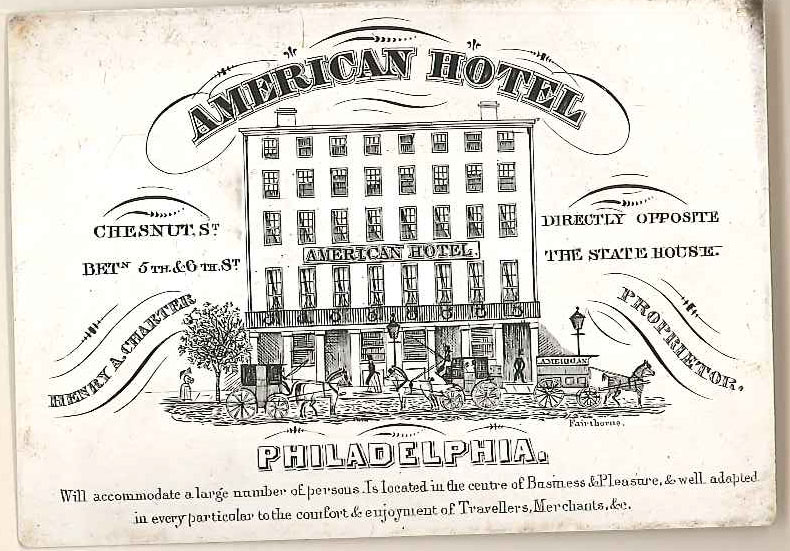Every school student has been taught that George Washington
and his committee tasked Mrs. Elizabeth Ross, a milliner whose business was
located between 2nd and 3rd on Arch Street, with the creation of the first
American flag. Supposedly, the agile seamstress dazzled this group of august
gentlemen by quickly snipping out one of the now-famous five-pointed stars with
only one clip of her scissors.
The first postcard portrays the home of Betsy Ross as it
appeared at the beginning of the twentieth century. Strangely, the card’s caption
reads “The First Flag of the U. S. was made in this House by Mrs. A. Mund,” and
a small replica of the flag, suspended from the second story, bears the
inscription “The first flag was made in this house. Mrs. A. Mund.” Who was this
woman, and why was her name linked to the famous Flag House?
In 1876 or 1877 Philip Mund opened a beer saloon at 239 Arch
Street. Forty-five years later, his widow, Mrs. Amelia Mund, now proprietress
of the saloon, aware of the importance of this historic building thought to
have been the Ross establishment, noted that there had never been a sign
identifying it as the site where the first American flag had been produced.
So, mystery solved: This postcard’s creator mistakenly
combined the statements on that advertising signage. It should have read, “The first flag was made in this house,” (period,
end!), and should have been followed
by the statement: “This building was later owned by Mrs. A. Mund.”
In 1937, a donation of $25,000 by Philadelphia radio magnate
A. Atwater Kent paid for the necessary radical surgery that was performed on
the dwelling’s interior and exterior. The second postcard view, circa 1950, shows
the front doorway moved to the far right corner and the original plate glass
window replaced by a shuttered pane. The building to its left, purchased by
Kent, was later renovated into a courtyard.
These two views are from a collection of more than 230
Philadelphia postcards generously donated to the Library Company in 2013 by Ms.
Philippa Campbell. They are currently being processed into the LCP postcard database.
Gus Spector
LCP Volunteer





